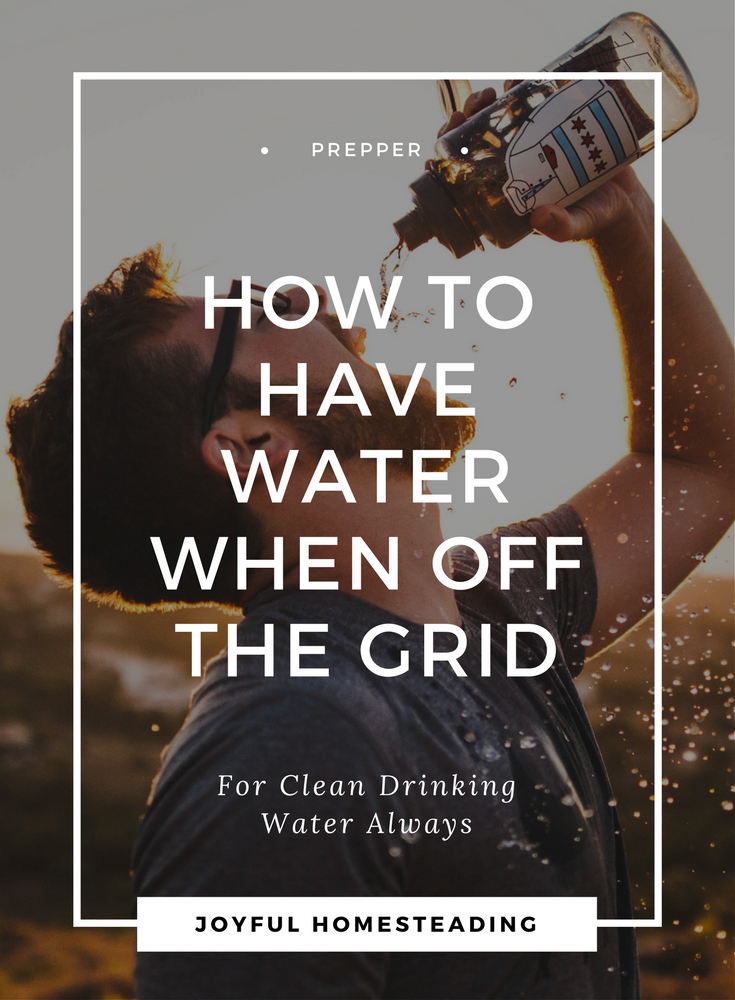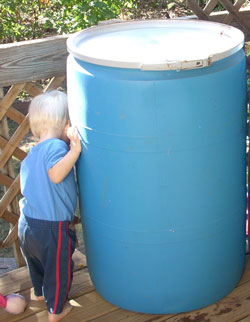Off the Grid Well
A Cistern Provides Water Storage For Your Homestead
Off the Grid Well: A cistern provides a water storage system to use as a backup for wind- or solar-powered deep-well pumps. Use it also to collect rainwater and save on energy costs.

Having a cistern on your homestead is a bit like having insurance. Should your power system go off or your solar or wind-powered deep well pumps not work, you have a source of water on hand.

Having a good supply of water on hand is one of the most important things all people need to do. Unfortunately, it's the one thing most overlook.
We've been spoiled by the public utility system.
Water on hand with the turn of a tap - as much as we want, whenever we want it! But in the face of disaster we can lose that water. As victims of hurricanes and floods realize, clean, safe drinking water is one the most important things to have on hand.
Water is crucial to our survival. The human body can go for weeks without food. But without water, we will perish within three days. A normally active person will use 2 gallons of water per day. It's a good idea to have a 2-week supply of water on hand for emergencies.
That means that a family of five will need a minimum of 70 gallons of water on hand. And that's just for drinking. That doesn't include cooking, laundry, taking showers or flushing the toilet. If you live in a remote area with no public water system, you should have at least 2,500 gallons of water on hand in case there's a fire.
Storing water in an off the grid well such as a cistern or other large tanks just makes sense for the successful homesteader.
Saving the Rain
Collecting rainwater is an excellent way to fill your cistern without having to rely on any source of power - except for rain power. In his book, Power with nature, Rex A. Ewing has come up with a formula to determine how much water you can collect per inch of rain. According to his formula, you should use the following calculation: Area of roof (sq. ft.) x inches of rain x .623. The number .623 is derived from 0.0833, the number of feet in an inch, times 7.48, the number of gallons in a cubic foot.
Say you're collecting rain off your roof that you funnel into your off the grid well. You live in an 1,800 square foot home. You get one inch of rain in your area. According to Rex Ewing's formula, you can figure the following: 1800 (size of roof) x 1 (inches) x .623 = 1,121.4 gallons of water. That means that if you got two and a half inches of rain, you'd have enough water for fire protection - over 2,803 gallons.
If you got another inch of rain and a good water filtration system, you would have enough drinkable water for emergencies.
A Low Cost Option
If you're not ready to invest in an off the grid well such as a large cistern, you could put in a few rain barrels instead. Get yourself some plastic barrels that holds at least 55 gallons. We got ours at a local plastic container supply company. You will want new barrels that have sealed lids that are also removable and child resistant. That way it's safe and also keeps pests out, but also allows for easy cleaning. Also, screen the barrel entrance to keep out dirt and mosquitoes.
In the lid, you'll need to cut a hole for the downspout. Make the hole large enough that the downspout fits securely. Near the top of the barrel you will need to cut another hole. This is where you will insert your angled runoff pipe. Then toward the lower end of the barrel, you'll insert a spigot for getting water when you need it.
Build Your Own
Off the Grid Well
You can also build an off the grid well into the ground that can hold up to 5,000 gallons of water. Dig a good-sized, even hole in the ground with a level surface. Lay a concrete floor over that surface and cover the dirt walls with several coats of plaster to hold in the water. You can then cap your off the grid well with a concrete lid.
Learn More About Going Off the Grid










New! Comments
Have your say about what you just read! Leave me a comment in the box below.